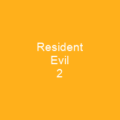What Makes Horror Games So Scary?
Imagine stepping into a world where every shadow seems to hold a threat, and every creak in the floor could be a monster lurking just out of sight. That’s what horror games are all about.
The Basics: What is a Horror Game?
A horror game is more than just a video game; it’s an experience that aims to scare you, making your heart race and palms sweat. Unlike other genres, these games focus on narrative or visual presentation, using various gameplay types to keep players on edge.
Subgenres: The Many Faces of Horror
Horror games come in many flavors, each with its own unique twist:
- Action horror: Fast-paced and full of action, these games keep you running and fighting for survival.
- Survival horror: Limited resources mean every decision counts. You must survive against the odds.
- Psychological horror: These games play with your mind, using unreliable narrators to create a sense of unease and fear through emotional and mental states.
- Jump scare horror: Designed for sudden surprises and shocks, these games rely on quick, intense moments to keep you on the edge of your seat.
Notable Examples: Jump Scare Horror Games
Some examples of jump scare horror games include Dino Crisis, Outlast, Poppy Playtime, and Resident Evil. These titles are known for their sudden, intense moments that can make your heart skip a beat. Imagine playing through these games with the lights off—would you dare?
Reverse Horror: Scaring Others Instead of Being Scared
While most horror games focus on scaring players, reverse horror games like Carrion and asymmetric multiplayer modes in Dead by Daylight and Friday the 13th: The Game take a different approach. In these games, you’re not just scared; you’re the one doing the scaring.
A Brief History of Horror Games
The incorporation of horror themes into video games dates back to 1972 with early attempts such as Haunted House overlay on the Magnavox Odyssey and Space Invaders. Notable early horror video games include Nostromo (1981), Haunted House (1982), and 3D Monster Maze (1982).
The 1980s and 1990s: Horror Games Inspired by Films
In the 1980s and 1990s, games inspired by horror films were released. Titles like The Texas Chainsaw Massacre (1983) and Friday the 13th (1989) brought a new level of fear to gaming. These games laid the groundwork for what would become some of the most iconic horror franchises.
Survival Horror: The Rise of Resident Evil
Resident Evil, released in 1996 by Capcom, was not just another game; it was a revolution. It defined and popularized survival horror games. With its limited resources and tense atmosphere, Resident Evil set the standard for what players expected from this genre. The success of Resident Evil sparked a renewed interest in zombie films by the 2000s, influencing hit movies like 28 Days Later (2002), the Resident Evil film series, and Dawn of the Dead (2004).
The Indie Horror Boom: Embracing Old Aesthetics
In the early 2010s, indie horror games found a new aesthetic by emulating the graphic style of older platforms. Series like Frictional Games’ Penumbra series and Amnesia series, and Red Barrels’ Outlast series captured the essence of classic horror games like Silent Hill and Resident Evil. These games brought a fresh, nostalgic feel to the genre.
The Rise of Online Streaming: Reactions as a New Form of Engagement
Games like Slender: The Eight Pages and The Five Nights at Freddy’s series gained popularity through online streaming, where viewers watched reactions to players’ experiences. These games leveraged the power of community engagement, turning fear into a shared experience.
Modern Horror Games: Embracing Low-Poly Graphics and Pixel Art
In recent years, indie horror games have found success by embracing low-poly graphics reminiscent of early PlayStation consoles or even pixel art. This aesthetic not only pays homage to the past but also adds a unique twist to modern horror gaming.
Conclusion: The Enduring Appeal of Horror Games
Horror games continue to captivate players with their ability to create fear and tension, pushing the boundaries of what video games can do. Whether you’re playing for scares or just to experience a unique narrative, these games offer an unforgettable journey into the unknown.

You want to know more about Horror game?
This page is based on the article Horror game published in Wikipedia (retrieved on January 1, 2025) and was automatically summarized using artificial intelligence.






